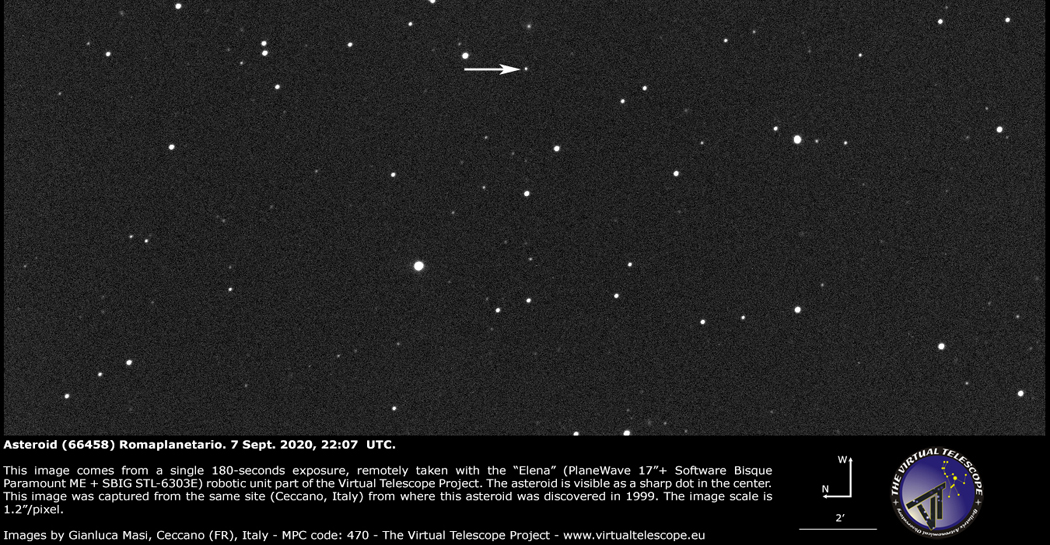Romaplanetario
Until January 2005 it was only one of the many small planets that circle around the Solar System, between the orbits of Marte and Giove. But for Rome, the asteroid (66458) has become very special: the International Astronomical Union has named it "Romaplanetario", a name that celebrates the return of the Planetario di Roma

The story of the " Romaplanetario " starts on an August night in 1999 when the scientist Gianluca Masi, an asteroid researcher at the Osservatorio Astronomico "Bellatrix" di Ceccano (FR), identifies an object with a curious movement in the costellazione dei Pesci. The heavenly object, unknown, is moving among the stars in the opposite direction compared to an ordinary asteroid. A distinctive sign, which seems to mark it out as being part of the famous family of "near-Earth objects", and for this reason it is immediately being monitored with attention by many observers around the globe. It was decided that the object was not a danger to our planet, but that it was an asteroid with a pronounced irregular orbit.
In the years that followed, this new, small world completed the required itinerary patiently in order to be given a definitive catalogue number and, more importantly, its own name. As is still the tradition today, it is the discoverer who makes a reasoned proposal for its " baptism ", once the orbit has been established with great accuracy. It was at this point that Masi, a member of the scientific staff of the Planetario di Roma, wanted to celebrate the reopening of the structure in 2004, finding complete agreement with the specific Commission of the International Astronomical Union, which made the appointment official in 2005.
"Romaplanetario" has an estimated diameter of between 2 and 4 kilometres and orbits at an average distance from the Sun of over 390 million kilometres (2.6 times the Earth-Sun distance), while its "year", the time required to complete one revolution around our star, lasts 4.2 Earth years.
To celebrate the second birthday of the Planetario di Roma (2006), an asteroid model was presented featuring the famous sites and monuments of the city.





































